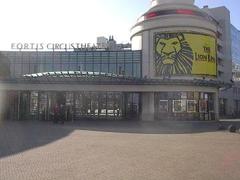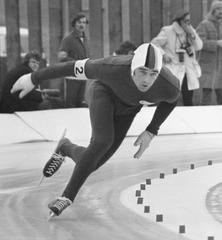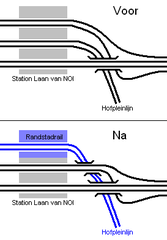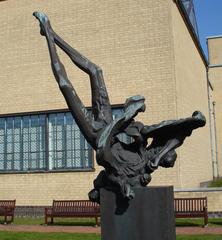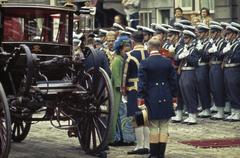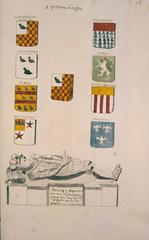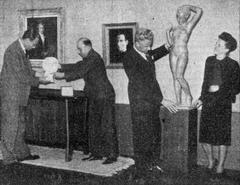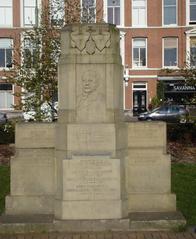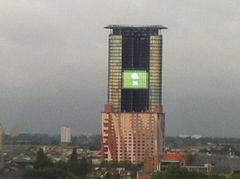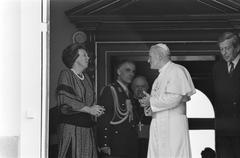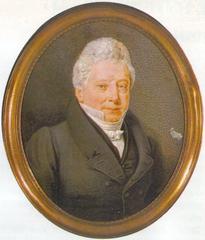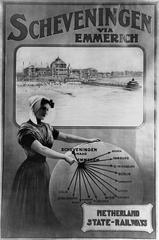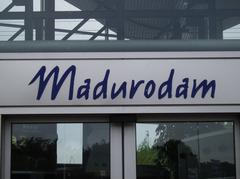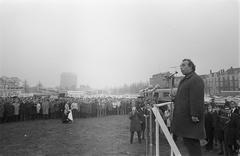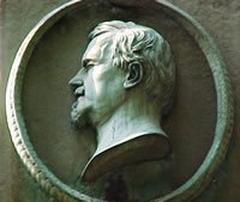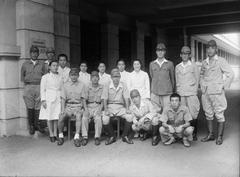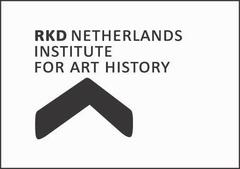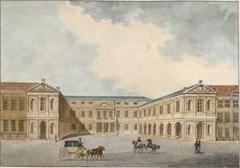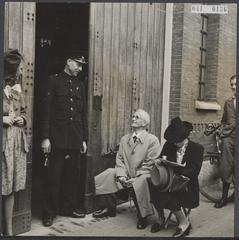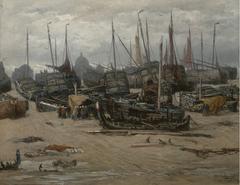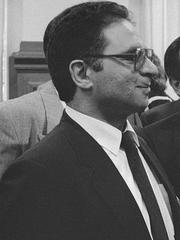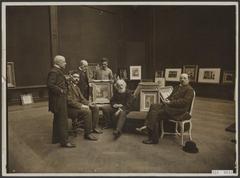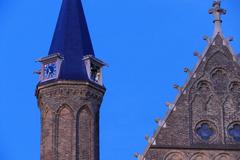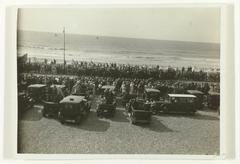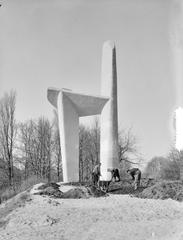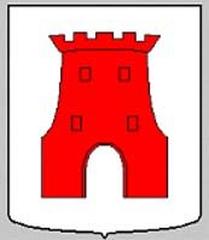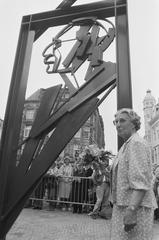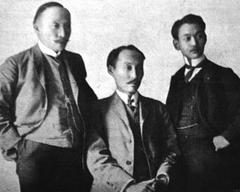
Indies Monument The Hague: Visiting Hours, Tickets, and Historical Significance
Date: 04/07/2025
Introduction
The Indies Monument (Indisch Monument) in The Hague is a solemn and evocative memorial dedicated to the victims of the Japanese occupation of the former Dutch East Indies (now Indonesia) during World War II. Located in the tranquil Scheveningse Bosjes park, the monument stands as a powerful reminder of a turbulent era, honoring the suffering and resilience of Dutch nationals, Indo-Dutch, and indigenous Indonesians affected by war, colonialism, and displacement. This comprehensive guide provides detailed information on the monument’s history, visiting hours, accessibility, ticket details, commemorative practices, and nearby attractions, making it essential reading for visitors seeking to understand this pivotal chapter of Dutch and Southeast Asian history.
For the most accurate and up-to-date information, consult official resources such as Den Haag Tourism, the Indisch Monument Foundation, and 15augustus1945.nl.
Table of Contents
- Colonial Legacy and the Dutch East Indies
- World War II and the Japanese Occupation
- Postwar Turmoil and Indonesian Independence
- Visiting the Indies Monument: Hours, Tickets, and Accessibility
- Commemorative Practices and Annual Events
- Symbolism and Design Elements
- Travel Tips and Nearby Attractions
- Practical Visitor Information
- Frequently Asked Questions (FAQ)
- Conclusion
- References
Colonial Legacy and the Dutch East Indies
The Indies Monument is deeply rooted in the legacy of Dutch colonialism in Southeast Asia. The Dutch East Indies, present-day Indonesia, was a colony of the Netherlands from the 19th century until the mid-20th century. This period was marked by economic exploitation, social stratification, and resistance from local populations. The Dutch maintained control through military and administrative means, with figures such as Johannes Benedict van Heutsz symbolizing the harsh realities of colonial rule (Stadscuratorium).
World War II and the Japanese Occupation
World War II dramatically altered the fate of the Dutch East Indies. In 1942, the Japanese Imperial Army invaded, ending centuries of Dutch colonial rule—if only temporarily. The occupation, which lasted until 1945, brought immense hardship to both the indigenous population and the Dutch and Eurasian communities. Tens of thousands were interned in camps, forced into hard labor, and subjected to violence and deprivation. Estimates place Dutch civilian deaths between 13,000 and 22,000, with many more among soldiers and local populations (Wikipedia).
Crucially, the occupation also fueled Indonesian nationalist movements, leading to the declaration of independence on August 17, 1945—a date reflected in the monument’s design (15augustus1945.nl).
Postwar Turmoil and Indonesian Independence
Following Japan’s surrender in August 1945, the region entered a tumultuous period known as the Bersiap, marked by violence and upheaval as Indonesian nationalist forces asserted independence. The subsequent conflict with the Netherlands ended with Indonesian sovereignty in 1949.
Visiting the Indies Monument: Hours, Tickets, and Accessibility
Location: Scheveningse Bosjes park, Scheveningseweg, 2584 AA Den Haag, Netherlands.
- Visiting Hours: The Indies Monument is accessible 24 hours a day, year-round.
- Admission: Free; no tickets or reservations are required.
- Accessibility: The site is fully wheelchair accessible via paved paths, with benches available for rest. The terrain is generally even, though some areas may be uneven due to tree roots.
- On-Site Facilities: There are no restrooms or cafés at the monument. The nearest public toilets are at the World Forum convention center (about 500 meters away) or in local cafés along Frederik Hendriklaan.
For directions and public transport options, use the 9292 journey planner.
Commemorative Practices and Annual Events
National Remembrance Day: August 15
Every year on August 15, the Netherlands observes the official end of World War II in Asia with a major commemoration at the Indies Monument. The Nationale Herdenking 15 Augustus 1945 honors all victims of the Japanese occupation and the war in the Dutch East Indies, drawing thousands of survivors, descendants, dignitaries, and members of the Dutch-Indonesian community (denhaag.com; dachist.org).
Ceremony Highlights:
- Musical performances, including the “Indisch Onze Vader” by local choirs
- Speeches and personal testimonials from survivors and descendants
- Wreath-laying and floral tributes
- Parade past the monument for personal reflection
- Live national broadcast for those unable to attend in person
The ceremony is open to all, though it can become very crowded; early arrival is advised.
Symbolism and Design Elements
Artistic Vision
The monument was designed by sculptor Jaroslawa Dankowa and unveiled by Queen Beatrix in 1988. It features seventeen life-sized bronze figures on a low, circular stone plinth arranged in a semi-circle. The figures represent a diverse cross-section of the population—men, women, children, elderly—each conveying emotions from grief and despair to resilience and hope (Indisch Monument Foundation).
Key Symbolic Elements:
- Seventeen Figures: Reference August 17, 1945—Indonesia’s independence day—signifying the intertwined histories of the Netherlands and Indonesia.
- Reflecting Pool: Encircles the base, symbolizing cleansing, healing, and the sea journey many survivors took to the Netherlands.
- Melati Jasmine: Worn at ceremonies as a symbol of purity, love, and remembrance (dachist.org).
- Inscription: “De geest overwint” (“the spirit conquers”), reinforcing the themes of endurance and hope.
- Earth from War Cemeteries: Soil from Indonesian war cemeteries is buried at the monument, physically connecting the two nations (theindoproject.org).
Informational plaques in Dutch and English provide historical context on-site.
Travel Tips and Nearby Attractions
- Getting There: Tram lines 1 (World Forum stop) and 9 (Madurodam stop) provide easy access; both are a 10-15 minute walk from the monument.
- By Bike: Dedicated paths and bike racks are available.
- Nearby Landmarks:
- Peace Palace: Seat of the International Court of Justice (Peace Palace)
- Madurodam: A miniature park of Dutch landmarks
- Museon-Omniversum: Science and culture museum
- Gemeentemuseum Den Haag: Modern art and Dutch masters
- Frederik Hendriklaan (“De Fred”): Shopping and dining street
Pair your visit with the Indisch Herinneringscentrum for exhibitions and resources on Dutch-Indonesian history (Indisch Herinneringscentrum).
Practical Visitor Information
- Dress modestly and conduct yourself respectfully—this is a site of remembrance.
- Photography is permitted; please be discreet, especially during ceremonies or when others are in mourning.
- No climbing on statues or disturbing floral tributes.
- No food or drink at the memorial itself; enjoy refreshments at nearby cafés instead.
- Service animals are allowed; supervise children at all times.
- Safety: The area is considered safe, but always be aware of your belongings.
Frequently Asked Questions (FAQ)
Q: What are the Indies Monument visiting hours?
A: The monument is open 24/7, year-round.
Q: Do I need a ticket to visit?
A: No, access is free, and no tickets are required.
Q: Is the site wheelchair accessible?
A: Yes, paved paths provide good access for wheelchairs, though some areas may require assistance.
Q: Are guided tours available?
A: Regular guided tours are not offered at the monument, but local historical societies sometimes include it in walking tours. Contact The Hague’s tourist office for details.
Q: When is the best time to visit?
A: Early mornings or late afternoons on weekdays are quieter. August 15 is busy due to the national commemoration.
Q: Can I attend the commemoration ceremony?
A: Yes, the August 15 ceremony is open to the public.
Conclusion
The Indies Monument in The Hague stands as a profound site of memory, bridging past and present by honoring the victims of war, colonialism, and displacement. Its evocative bronze figures and symbolic features invite reflection on themes of suffering, resilience, and reconciliation. With free, year-round access and a central location near many of The Hague’s cultural landmarks, the monument is an essential destination for anyone interested in Dutch-Indonesian history. Enhance your experience by pairing your visit with nearby museums and remembrance centers, and deepen your understanding with resources available through the Indisch Monument Foundation and Den Haag Tourism.
To further enrich your visit, download the Audiala app for guided audio tours, and follow us on social media for updates on commemorations and historical discoveries in The Hague.
References
- Visiting the Indies Monument in The Hague: History, Tickets, and Travel Tips, 2025, Stadscuratorium (Stadscuratorium)
- Indies Monument Visiting Hours, History, and Visitor Guide in The Hague, 2025, Indisch Monument Foundation (Indisch Monument Foundation)
- Visiting the Indies Monument in The Hague: Hours, Tickets, and Historical Significance, 2025, The Indo Project (The Indo Project)
- Indies Monument Visiting Hours, Tickets, and Guide to Historical Sites in The Hague, 2025, Den Haag Tourism (Den Haag Tourism)
- National Remembrance Day and Commemoration 15 August 1945, 2025, Dachist (Dachist)
- 15augustus1945.nl - Indies Monument Information, 2025 (15augustus1945.nl)








